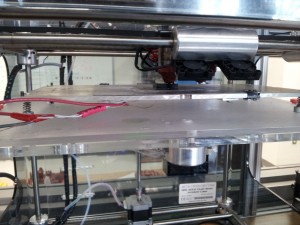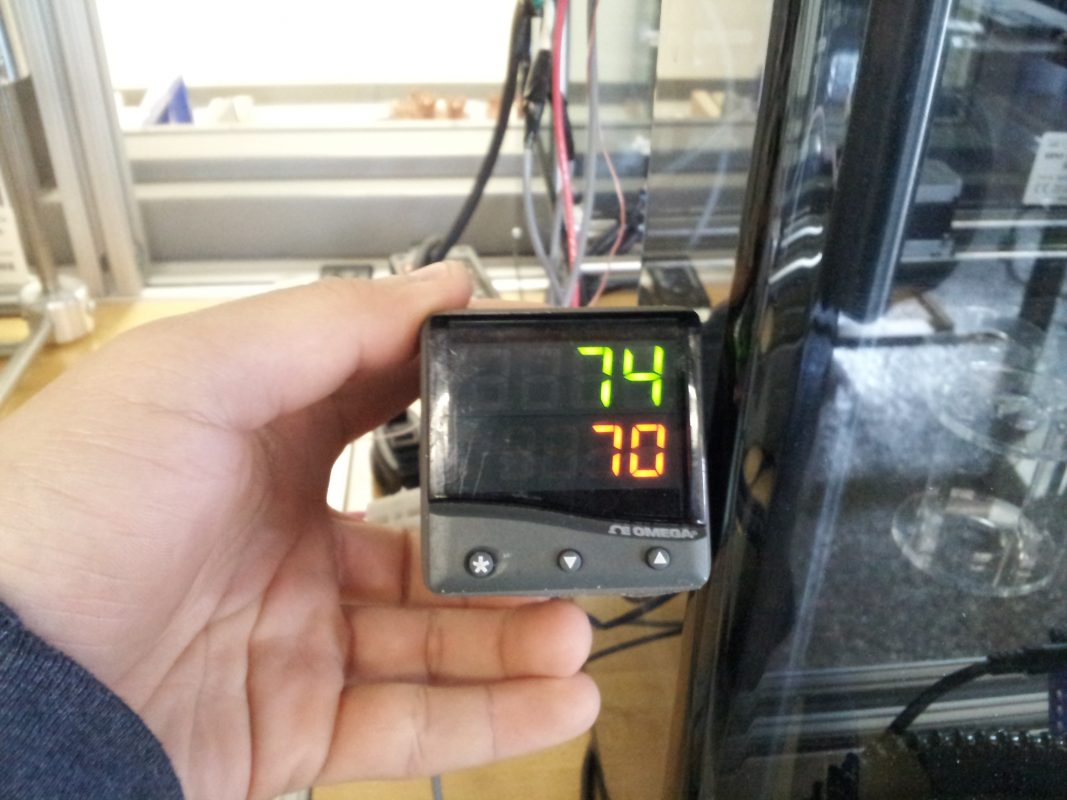Being a research-based university, we are constantly presented with different projects requiring us to build parts on the “low end” 3-D printers. Normally this is not an issue but occasionally we have to make modifications to the printers to ensure we meet our goals. This became a hassle because we would constantly have to monitor the printers and make manual adjustments to attempt to finish prints. To overcome this obstacle, we designed a heated enclosure to encompass our 5 most commonly used printers.

These printers are mainly used by students in various production and design classes that require them to build a final project. The parts are used for rapid prototyping and would frequently lift and warp off of the build platforms. Below we have two of our solutions we came up with. One solution consists of a heated build platform that was monitored by a heater controller (70 degrees C). This solution worked but was not a long-term solution; the platforms would require cleaning after every build and applying a coat of an ABS and acetone solution prior to printing. Our second solution was to build an enclosure for the printers and heat the entire enclosure. As of right now we have abandoned the heated platform idea and decided to focus on the heated enclosure concept. This would ensure that all 5 printers would be operating at the same consistency and would significantly reduce troubleshooting. We will post further results after the enclosure is constructed and operational.

